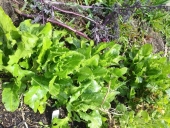
 2
2








find religion! church
kiva! hyvä! iloinen! pikkumaatila
get stung! beehives
be hospitable! host-a-hive
be antisocial! facespace

















find religion! church
kiva! hyvä! iloinen! pikkumaatila
get stung! beehives
be hospitable! host-a-hive
be antisocial! facespace
 2
2








"the qualities of these bacteria, like the heat of the sun, electricity, or the qualities of metals, are part of the storehouse of knowledge of all men. They are manifestations of the laws of nature, free to all men and reserved exclusively to none." SCOTUS, Funk Bros. Seed Co. v. Kale Inoculant Co.









find religion! church
kiva! hyvä! iloinen! pikkumaatila
get stung! beehives
be hospitable! host-a-hive
be antisocial! facespace




Øystein S. wrote:hazelnuts would [produce], the wild variety is all over the place, and I have cultivated varieties on the wish list in any case. When I get around to it.... But I think the nuts would be more for human than animal consumption?
Self-feeding would be even better, of course. But the trouble with that is that the ground is often too wet from October till May, so too much cow trampling would damage the field and turf to much.
"the qualities of these bacteria, like the heat of the sun, electricity, or the qualities of metals, are part of the storehouse of knowledge of all men. They are manifestations of the laws of nature, free to all men and reserved exclusively to none." SCOTUS, Funk Bros. Seed Co. v. Kale Inoculant Co.




Emile Spore wrote:
If I remember correctly, the pulp from cider manufacturing is a better feed than apples, as apples make for runny cow poop.








Highland Creamery, micro-dairy & family farm.
https://www.facebook.com/home.php#!/highlandcreamery

|
Well behaved women rarely make history - Eleanor Roosevelt. tiny ad:
montana community seeking 20 people who are gardeners or want to be gardeners
https://permies.com/t/359868/montana-community-seeking-people-gardeners
|







